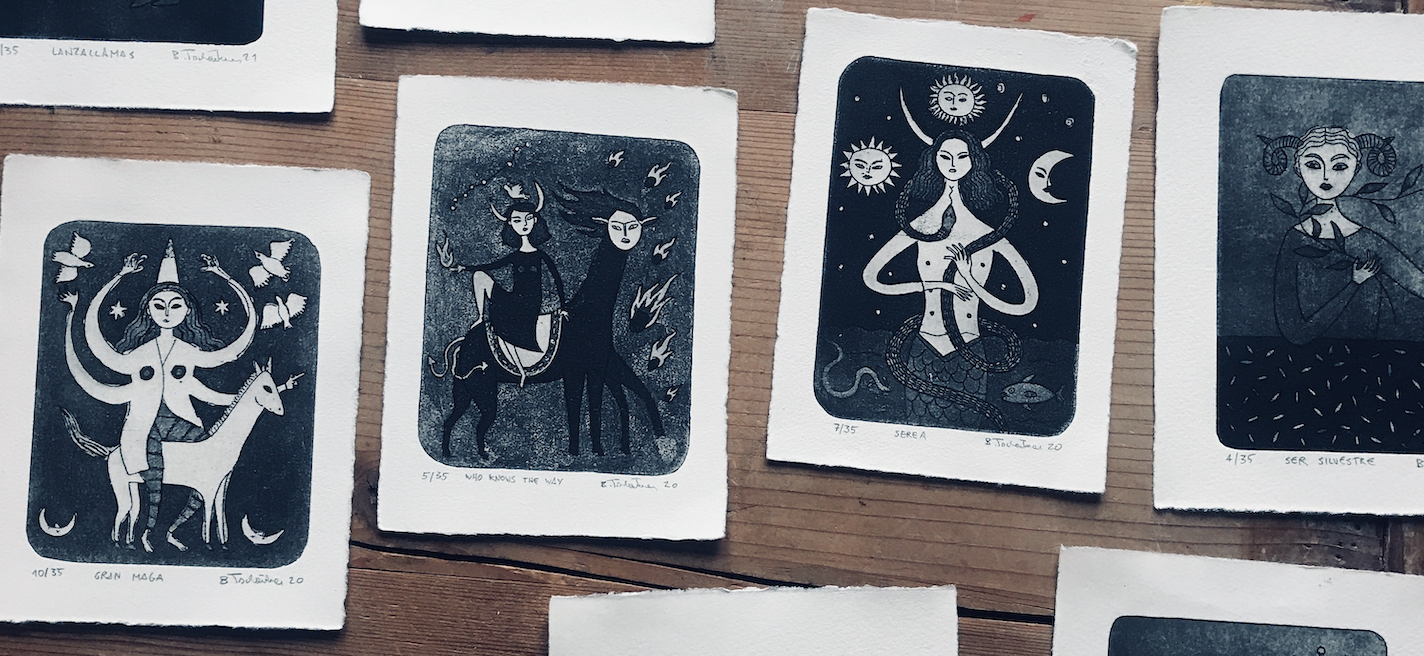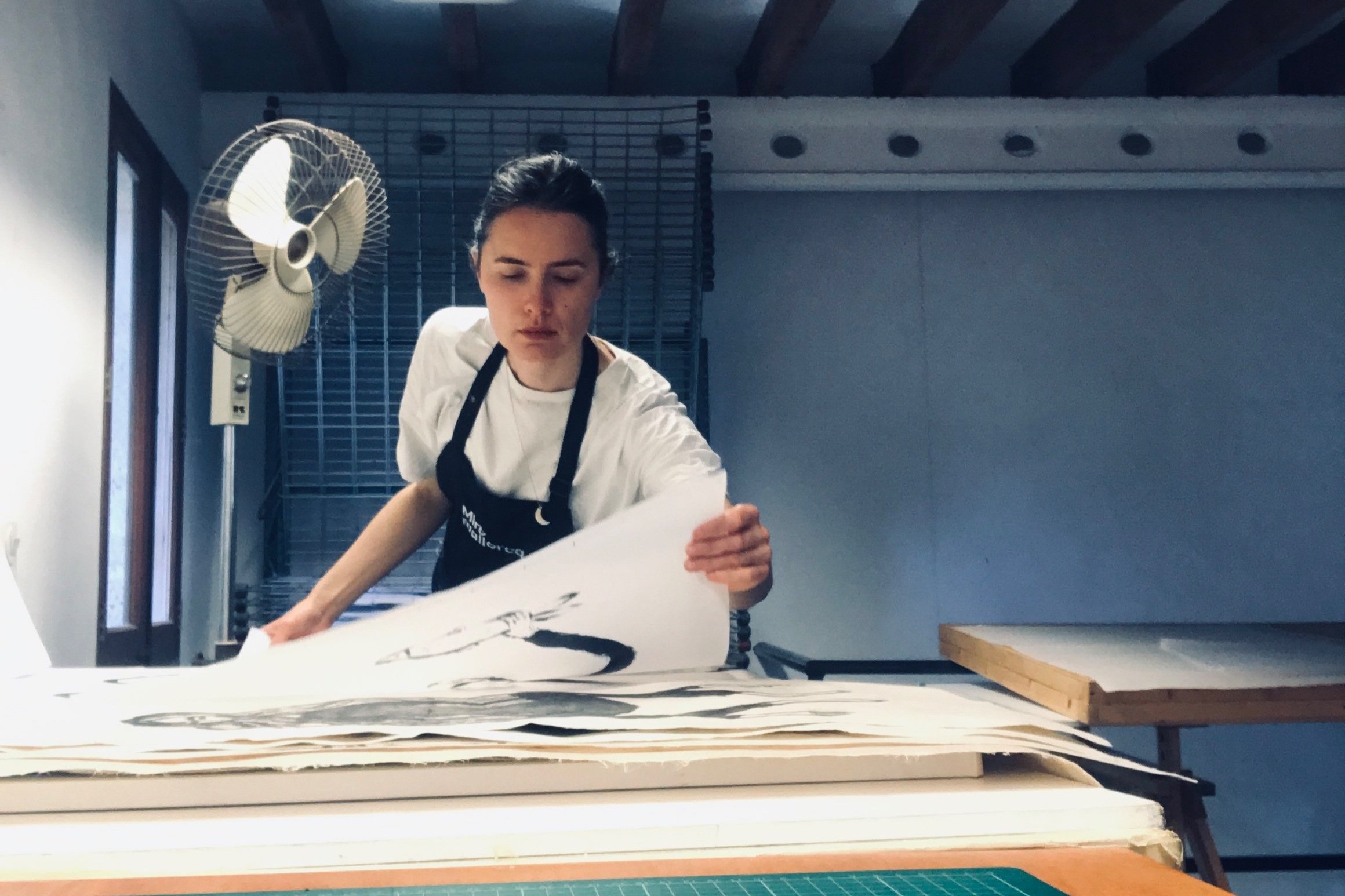Some people take a ceramic plate of mine into their hands and they understand everything with their eyes and their hands and their heart.
But other people don't understand the work that lies behind a handmade piece of art and don't understand why a handmade and handpainted plate costs more than a plate from IKEA.
Firstly, before we begin even talking about the actual work required to create a piece, there are years and decades of training and study behind me without which I would not be able to do what I do. So, behind every piece of art, there is a lot more work than the actual work it takes to create the actual artwork.
No artist creates an artwork out of the void, it is the result of a long, tedious, and often exhausting (and no, not always fun!) process. Every piece is part of a whole creative world and echoes that world and everything that came before and after it.
The work process of a porcelain piece spans several weeks. First, in my ceramic studio, I open a bag of porcelain, take out a lump, and start to shape my piece. Then, I let it dry and when it is fairly dry, I work on the details with a sponge. After around a week, when it is completely dry, it is ready to fire (or sometimes, it tore in the drying process and I can trash it).
When I have created enough pieces, I fill the kiln. The idea is to fit as many pieces in the kiln as possible and it is a bit like Tetris.
I bisque-fire them at 900°. During the firing, I can’t work in my studio because the firing produces toxic gases. After three days, I can open the kiln. At this stage, some pieces have been cracked or broken as well (in ceramics, one learns to live with loss. Lots of loss ;-))
Now I can paint my pieces and when they are painted, I cover them with glazes. Glazing is the part of the process I dislike the most – it's boring work and it requires a lot of accuracy – and cleaning. But I really really love glazes, so the work is worth it!
When the pieces are glazed, I place them in the kiln again. This time, they are not allowed to touch each other because the glaze will make them stick to each other, so much fewer pieces fit in the kiln now. I fire them again, this time at 1250°, and then, after three more days, the best moment has arrived: The opening of the kiln!
I open the kiln like a child on Christmas eve. What comes out of the kiln is not only my creation, but also the creation of the fire, something which is completely out of my control, and completely magic. There is a beauty I could not have created by myself.
And also, some pieces have cracked or broken at this stage of the process, or the painting on the ceramic surface didn't turn out well – and I have to throw them away as well.
The work process does not stop here. The ceramic pieces need to be photographed, the photographs need to be edited, and shop listings and social media posts need to be made. Ceramics need to be packed and shipped, invoices need to be written. The studio needs to be cleaned, rent needs to be paid, and materials need to be ordered and paid.
There is a lot of work behind and around every piece. It's like a chunk of my time and attention has been frozen into shape, a chunk of time I will never be able to get back but is forever embodied in the artwork.
But for me, this is just a small part of the value of an artwork. It is not the time and effort alone, but the energy that is in the piece, and it's an energy that contains everything that I've learned and seen and done, everything that has inspired me, and it makes every artwork a member of a family of things that talk to each other and are forever connected with each other. They are speaking of life itself and this is what makes them precious for me.


